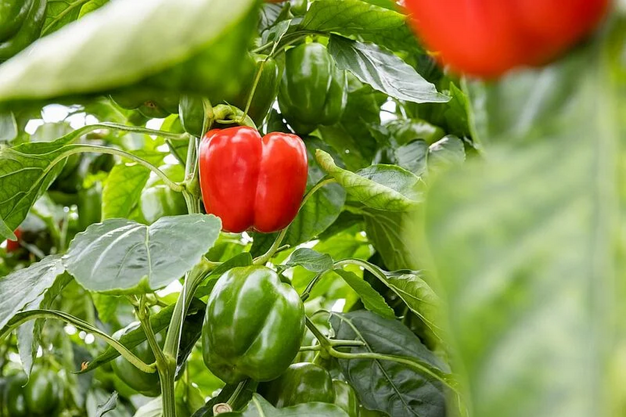Fusarium has re-emerged as a problem in pepper cultivation in recent years. This soil-borne fungus can infect the roots of pepper plants. Several species of Fusarium affect pepper crops, including Fusarium oxysporum, Fusarium solani, and Fusarium lactis.
Depending on the Fusarium specie, different symptoms can be observed. A Fusarium infection can lead to root rot and stunted growth, which results in yield loss. Also, the plant's vascular system can be affected, and in severe cases, the plant may even wilt and die. Fusarium infections can lead to significant plant loss, reaching up to 50%. Therefore, taking preventive measures is crucial to avoid this disease.

Trianum as a preventive measure
One preventive measure is the timely application of Trianum. Trianum is a biological fungicide based on the fungus Trichoderma harzianum strain T-22. This biological fungicide protects plant roots against a wide range of diseases, including Fusarium.
After applying Trianum, its spores germinate, and the fungus colonizes the roots. Through several mechanisms, Trianum protects the roots against Fusarium. Preventive application of Trianum from the start of cultivation is essential to prevent early Fusarium infection.
In 2022, Glastuinbouw The Netherlands commissioned laboratory tests to investigate the effectiveness of various agents against Fusarium wilt (Fusarium oxysporum) in peppers. In these tests, Trianum showed a strong reduction of Fusarium wilt, with a 78% decrease 10 days after inoculation.
Additionally, Trianum has proven effective in numerous other crops against soil-borne diseases, both in greenhouse crops like cucumbers and in field crops such as carrots and even in sports fields.
Application of Trianum
Trianum is available in two formulations: Trianum-P and Trianum-G. Trianum-P is a water-soluble granule that can be applied through irrigation. Trianum-G is a granule that can be sprinkled into the planting hole before planting.
The best results are achieved by treating the plants early at the plant nursery with Trianum-P applied via overhead irrigation or spray on the soil. To maintain a high level of protection during the season it is then recommended to sprinkle Trianum-G on the planting hole before transplanting. This can be done using the Trianum-G Tool, a device that helps to apply the exact dose in a simple way. By using Trianum-G at the beginning of cultivation, rather than Trianum-P, no extra water is needed for the application. During the growing season, it is advised to apply Trianum-P monthly through drip irrigation.
For more information:
Koppert
[email protected]
www.koppert.com
